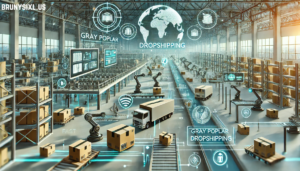
Introduction
As technology continues to reshape the world, rural communities often lag behind in accessing its benefits. 22025 Desa Tech emerges as a visionary initiative aimed at bridging this gap by transforming rural villages into thriving hubs of innovation and sustainability. The term “Desa” (village in Indonesian) reflects the focus on uplifting rural areas through tailored technological solutions that address education, healthcare, agriculture, and economic challenges.
This comprehensive guide dives into the key aspects of 22025 Desa Tech, providing practical steps, real-life examples, and actionable advice to help communities, policymakers, and stakeholders create a smarter, more connected world.
What is 22025 Desa Tech?
22025 Desa Tech is a forward-thinking strategy to integrate technology into rural settings, aiming for long-term societal transformation by 22025 and beyond. The initiative emphasizes creating smart villages, focusing on:
- Enhancing digital connectivity.
- Promoting green and sustainable technologies.
- Empowering rural populations through education, healthcare, and modern tools.
By addressing the specific needs of rural communities, this approach ensures inclusive development that benefits everyone.
Key Pillars of 22025 Desa Tech
Building Digital Infrastructure
The foundation of any technological transformation lies in connectivity. Many rural areas remain disconnected, making digital infrastructure a top priority. Key efforts include:
- Affordable Internet Access: Expanding broadband and satellite internet in remote areas.
- Smart Devices: Introducing cost-effective devices to enable communication and learning.
- Community Wi-Fi Centers: Establishing local hubs where people can access the internet for education, business, and personal use.
This infrastructure allows villagers to connect with the global economy, learn new skills, and access essential services.
Promoting Education and Digital Literacy
Education is critical for empowering communities. Desa Tech focuses on equipping schools and individuals with modern tools:
- E-Learning Platforms: Interactive courses tailored to local languages and contexts.
- Teacher Training: Programs to help educators use technology effectively.
- Digital Skills Workshops: Free or low-cost classes on basic computer usage, coding, and other tech skills.
Example: An e-learning platform in a rural Indonesian village enabled students to access quality education, improving pass rates by 40%.
Modernizing Agriculture
Agriculture remains the backbone of most rural economies. Desa Tech introduces innovations to boost productivity and sustainability:
- IoT in Farming: Sensors that monitor soil, water levels, and weather conditions.
- Agri-Apps: Real-time advice on crop management and market prices.
- Sustainable Practices: Promoting organic farming and efficient irrigation.
Example: A small farming community in India adopted IoT sensors, increasing yields by 25% and reducing water usage by 30%.
Improving Healthcare Access
Access to healthcare is a persistent challenge in rural areas. Desa Tech offers solutions to make healthcare more accessible:
- Telemedicine Services: Virtual consultations with doctors for quicker diagnoses.
- Mobile Clinics: Vehicles equipped with diagnostic tools for remote areas.
- Health Awareness Campaigns: Apps that educate users about hygiene, nutrition, and disease prevention.
Example: A telemedicine project in rural Africa reduced mortality rates by 20% in two years by providing instant medical advice.
Encouraging Economic Growth
Technology can significantly enhance rural livelihoods. Desa Tech emphasizes:
- E-Commerce: Helping small businesses sell their products online.
- Microfinance Apps: Providing easy access to loans and savings options.
- Entrepreneurship Training: Teaching villagers how to leverage technology for business growth.
Step-by-Step Guide to Implementing Desa Tech
- Assess Community Needs:
- Conduct surveys and interviews to identify pressing challenges like lack of education, healthcare, or connectivity.
- Develop a Roadmap:
- Create a clear plan, prioritizing urgent issues and allocating resources effectively.
- Form Partnerships:
- Collaborate with governments, NGOs, and private companies to access funding, expertise, and technology.
- Launch Pilot Projects:
- Test small-scale initiatives like community Wi-Fi or telemedicine to evaluate impact and scalability.
- Train Locals:
- Organize workshops to equip residents with the skills needed to maintain and operate new technologies.
- Monitor and Adapt:
- Continuously gather feedback and refine projects to ensure long-term success.
Real-Life Success Stories
- Digital Villages in India: Villages with Wi-Fi hotspots and e-learning centers witnessed increased literacy rates and improved employment opportunities.
- Smart Farming in Kenya: Farmers using drone technology saw a 50% increase in crop yields due to better pest management.
- Health Apps in Indonesia: A mobile health initiative reduced the spread of communicable diseases by educating villagers on preventive measures.
Conclusion
22025 Desa Tech is more than a vision; it is a call to action for creating a world where rural communities thrive alongside urban centers. By focusing on digital infrastructure, education, agriculture, healthcare, and economic empowerment, this initiative ensures sustainable and inclusive growth.
As we work towards this goal, everyone has a role to play—governments, organizations, and individuals alike. Let’s collaborate to make technology accessible and impactful for every village, ensuring no one is left behind in the journey toward progress.
Take Action Now: Support 22025 Desa Tech by contributing resources, spreading awareness, or volunteering in local projects. Together, we can create a smarter, more connected future.





